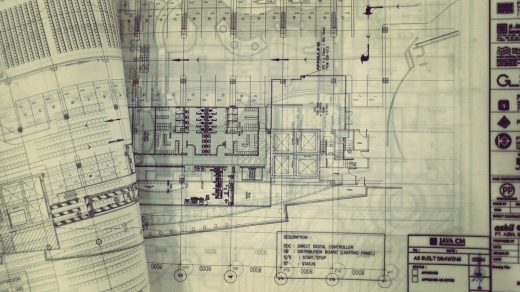What architects and builders need to know about formwork, Home interior design guide, Property style advice
What Architects and Builders Need To Know About Formwork
18 February 2022

Formwork serves a vital purpose in the construction of buildings. Architects and builders need to ensure that the formwork they use fulfils the various requirements of their projects.
Strong and secure formworks are imperative in terms of providing safe working conditions for everyone directly involved on the construction site.
Formworks are the temporary moulds that contain reinforcement bars and the fresh concrete until it hardens. They can provide short-term support for either part of or the whole structure.
What are the technical requirements?
- Formworks should follow the shape and size outlined in the structural plans. In addition, it should be possible for their various components to be connected on the construction site.
- The surface of the formworks must have the desired finish.
- They also need to withstand the pressure from the fresh concrete and be able to handle the working load without distorting or deflecting from their designated position.
- The formwork structures must not cause any damage to the concrete edge or surface while in use. If possible, the formworks should be sturdy enough for reuse once they have been removed.
- Builders must ensure that the connections on the formwork panels are tightly secured to prevent or reduce the risk of gaps or leakage of the fresh concrete.
What are the functional requirements?
- The formwork sections should be appropriately arranged and sized to make it easier to lift and transport them from one location to another.
- Workers should have little difficulty dismantling and moving the various formwork components.
- The ability to interchange the various formwork units is a vital functional feature.
- The formworks must be designed in such a way that workers can quickly fit and fasten them together.
- Functioning formworks need to be light but without any reduction in strength.
What are the financial requirements?
- If possible, the formworks should be made of inexpensive materials.
- The utilisation of the formworks should reduce a project’s energy and labour costs.
- Ideally, the formworks should be reusable as this will provide significant cost savings.
- There is also an economic advantage if a formwork system can be erected and dismantled using semi-skilled or even unskilled labour.
- Regular maintenance can extend the lifespan of formworks.
What are the safety requirements?
- Workers should be able to handle the formworks without any significant safety concerns.
- Formwork manufacturers should always factor in the health and safety regulations.
- The formwork systems should be stable enough to prevent accidents that may cause injury or death, construction delays and cost increases.
- The design of the formworks should also provide emergency response and escape routes.
Which concrete formwork designs are suitable?
The design and deployment of an optimum formwork solution requires a basic knowledge of the behaviour of fresh concrete when it is exerting pressure on the temporary mould. A typical formwork is designed to withstand the external lateral pressure of concrete.
According to Formwork 101: An Introductory Guide, there are several types of formwork.
Formwork frames based on materials used:
- Timber
- Aluminium
- Steel
- Plastic
Facing according to material:
- Plywood
- Steel
- Plastic
Formworks based on the concrete structure:
- Foundation
- Column
- Wall
- Slab
- Customised forms
With regard to initial costs, timber and plywood are the cheapest types of formwork. However, in terms of reusability, aluminium, steel and plastic are the better options.
Remember to take account of the cost of transporting the forms to the construction site. In addition, installing and dismantling the formworks can be a significant factor in terms of labour costs. Even if your preferred form is reusable, it may be more economical to use wood instead.
Here are some of the elements you need to consider when choosing a formwork system for your building projects. When designing a concrete formwork system, there are several factors to consider.
1. Concrete pouring height and rate
When the concrete is in its liquid form, it can exert significant pressure. You can determine the approximate amount of pressure by taking account of the height and weight of the concrete. However, the thickness of the wall has no bearing.
The concrete’s pressure is directly proportional to the height of the pouring. However, once the liquid concrete has become a semi-solid state, the pressure on the formwork will decrease.
2. Temperature
The concrete’s hardening time will largely depend on the temperature. Most formwork designers take 21oC as the average temperature. However, in order to prevent delays in the hardening process, you will need to decrease the pour rate at low temperatures. You could also heat the concrete to reduce the pressure against the formwork.
The ideal temperature for pouring concrete is between 16oC and 38oC. Any temperature outside this range means that the curing time will be hampered by inadequate moisture. Furthermore, the liquid concrete should contain enough water to achieve maximum strength.
3. Cement type
The type of cement you use for your construction projects is also a significant factor in determining the concrete’s hardening time. Make sure you adjust the pour rate if you are using a different cement than normal.
4. Vibration
Freshly poured concrete may contain hundreds if not thousands of air bubbles, resulting in a weak concrete structure. Formwork vibration can eliminate, if not reduce, these air bubbles, which is why it is often used in prefabricated concrete constructions. The vibrator is mounted outside the concrete formwork.
Many construction projects use internal concrete vibrators as the process is simple and requires only one operator. The probe-like internal vibrator should be inserted into the wet concrete before being slowly withdrawn.
5. Concrete slump
Concrete with a very low slump often exerts less pressure on formworks. If you need concrete with a slump of over 100m, you should use a formwork specifically designed to resist a full liquid head.
6. Chemical additives
Before adding additives such as plasticisers or retarders, you must make sure you follow the recommended usage guidelines.
Construction Formwork for Architects and Builders Conclusion
Formwork and Falsework are an integral part of any building work. These moulds give concrete form to your structural vision and you can design them in such a way that will fulfil your projects’ technical, functional, financial and safety requirements.
Formworks can be made of various materials and they are available in a range of sizes. The type of structure involved and factors such as the concrete pouring rate and height can significantly affect the hardening time and strength of your concrete. Since fresh concrete can exert considerable pressure on formworks, you can reduce the load by making use of special cement or chemical additives to accelerate the hardening process.
Comments on this What Architects and Builders Need To Know About Formwork article are welcome.
Windows & Blinds
Windows Posts
6 of the Hottest Window Blind Trends
How to choose best casement windows for your house
Where should you check out sash windows
Building Posts
Residential Architecture
Comments / photos for the What Architects and Builders should know about Formwork page welcome







